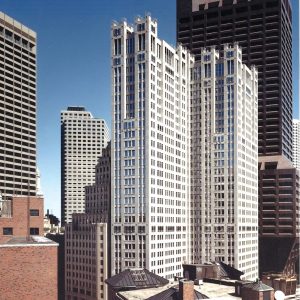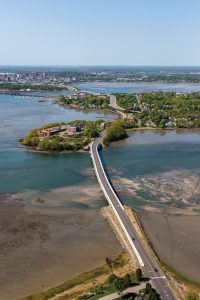Adding Value, Reducing Risk
Geotechnical peer review is not new, but it is not common industry practice. Today, however, there is a trend by public agencies in the United States to require it for tall buildings. What is geotechnical peer review, what is this trend, and what is its role in the design and construction industry for buildings and civil works?
News Flash!
August 21, 2017. The City of San Jose Office of the City Auditor issued a 52-page report to the City Council titled Audit of Residential High-Rises: Considerations for a City with a Growing Number of Tall Buildings. San Jose is the third largest city in California both in population and land area. Included in the report is the statement, “The City should consider additional safeguards to protect against geotechnical risk as taller buildings are developed.”
November 7, 2017. The City and County of San Francisco released Interim Guidelines and Procedures for Structural, Geotechnical, and Seismic Hazard Engineering Design Review for New Tall Buildings, where the “Structural Design Team shall include at least one Geotechnical Engineer” in all future projects.
January 2018. In New York City, discussions about geotechnical peer review begin with the New York City Department of Buildings and the American Council of Engineering Companies (ACEC) Metro Structural Codes Committee.
In the words of the song “For What It’s Worth” (written by Stephen Stills and first recorded by Buffalo Springfield in 1967), “there’s something happening here.” Is it one recent event or the culmination of issues? Population growth, seismic safety, concerns about effects of dewatering, and concerns about the settlement of buildings appear to have converged into a developing focus on geotechnical issues and geotechnical peer review.
Geotechnical Peer Review
Geotechnical peer review is not a new practice, but it is not the common practice. However, owners and designers are discovering the benefit of proactive peer review and the added value of managing risks to all parties associated with underground construction. There are several published examples of voluntary geotechnical peer review for some of the world’s tallest buildings.
Structural peer review is required by some building codes. For instance, it is well established in some jurisdictions including in New York City, Chicago, Los Angeles, Florida, Massachusetts, and Connecticut. Requirements (e.g., tall buildings or high-risk occupancy use) vary for when reviews are required. However, the geotechnical peer review component in these structural peer review requirements is generally absent.
The New York City (NYC) Building Code requires the structural peer reviewer to review the geotechnical report and confirm that the design incorporates the recommendations of the geotechnical investigation. The 2014 NYC Building Code Section 1617.5.1 states, “Review geotechnical and other engineering investigations that are related to the foundation and structural design and confirm that the design properly incorporates the results and recommendations of the investigations.” However, the NYC Building Code does not require an independent geotechnical engineer to review the geotechnical report, nor does it require the reviewer to confirm the validity of the recommendations in the report.
Are the San Jose recommendations and San Francisco directive the beginning of a national or perhaps a worldwide trend?
Agency Driven
Cities and states supplement adopted national building codes (e.g., International Building Code – IBC) with amendments and procedures to address local conditions, especially for tall buildings.
For tall buildings (240+ feet), the San Francisco Department of Building Inspection implemented amendments to its building code to include a geotechnical engineer as a member of the structural peer review team.
The city auditor of the City Council of San Jose seeks to adopt similar guidelines in response to an increasing number of proposed tall buildings. Some excerpts from the auditor’s guidelines report include:
- San Jose may also adopt similar guidelines to the city’s building code to include peer reviews of geotechnical reports and designs.
- The city should consider additional protections to safeguard against geotechnical risk as taller buildings are developed.
- Typically, the Building Division does not critically review the validity of the report itself when reviewing geotechnical reports.
- The additional review can help insure[sic] that there are no major engineering mistakes and that the appropriate effort has been made to develop a safe and cost-effective foundation design.
- A second opinion on soil conditions and foundations designs could help catch errors that could result in structural issues with building. However, this additional layer of review would add to project costs.
Some jurisdictions have introduced voluntary peer-review programs. Effective January 2018, the City of Chicago, Illinois, has implemented an internal Structural peer review program through its Department of Buildings.
The Process
In the author’s experience, requests for geotechnical peer reviews often come in one or more of these contexts:
- “We would just like to double-check the solutions being presented.”
- “This is an unusual project.”
- “We have not done this type of project or used this technology before.”
- “We would like another opinion.”
- “We would like to review constructability.”
- “Are there other solutions available.”
The peer review process can help all parties better understand, address, and ultimately reduce project risk. Naturally, the “reviewee” engineer or team can feel slightly uncomfortable by the prospect of an outside review. However, this can be mitigated with a positive attitude and a respectful, collaborative approach on the part of the reviewing engineer.
The best reviews actively and positively engage the design team to the benefit of all involved. Good peer reviewers possess both the required technical expertise (or know when, where, and how to bring it in), and strong communication and team-work skills.
Most peer reviews should take place during the design phase and start early, although a need for peer review can also develop from an unexpected construction issue. The review process may include inquiries about design procedures, analytical methods and results, and whether alternative solutions were considered. Commercial bid-ability and constructability may also be central topics.
The true purpose of a review is not to find fault or redo the work but to review the big picture and the processes, procedures, and rationale used during analysis and design. While the situation may dictate “audit level” technical or computational checking, the key is asking the right questions.
Questions may include:
- What are the geotechnical risks?
- How will the project be built?
- Have other solutions been evaluated along with relative merit and risks?
- Have intermediate loading cases (e.g., construction staging) been considered?
- What range of settlement is expected? What confidence level? What happens if it is more?
- What is the impact of the work on adjacent facilities and utilities?
- What could go wrong during construction of the design?
- What actions and contingency plans may be appropriate to address risks?
Qualifications
A geotechnical peer reviewer should:
- Be a qualified, experienced geotechnical engineer
- Possess mature analytical and problem-solving skills
- Possess both technical and good communication skills
- Know when to bring in highly specialized experts
- Seek to reveal opportunities to reduce risk, time, and cost
- Be a team player
Geotechnical Peer Review Examples
The author has been involved with voluntary peer reviews as both the reviewer and the reviewee. A few brief examples are provided below:

31-story building in Boston, MA, used geotechnical peer review for an innovative foundation system. Courtesy of Kohn Pedersen Fox.
- 101 Federal Street, 31 Story Building, Boston, MA: This office building is where drilled shaft foundations installed with a slurry method was first used in Boston. At the time (the mid-1980s), the technique had been used for slurry walls in Boston but not for drilled shafts. Noted drilled shaft expert Clyde N. Baker, P.E., S.E., of Chicago, provided the peer review and exhibited the desirable qualities of a peer reviewer (much appreciated by the young project engineer and author of this article whose work was reviewed!). The review gave the team comfort to proceed with an innovative process to the benefit of the owner.
- Governors Island, New York, NY: A man-made reinforced steep earth hill over filled land, up to 70 feet high, required extensive analysis of slope stability, settlement, and detailed design of slope stabilization. This was a very complex, high visibility, one-of-a-kind project. Geotechnical peer review challenged the design team to use three-dimensional geotechnical modeling for settlement and stability analysis and to optimize the design.
- Martin’s Point Bridge, Portland, ME: This was a design-build bridge replacement on large-diameter driven pipe piles and approach fills over compressible soils. This was MaineDOT’s first multi-integral pier project, and the geotechnical investigation was highly scrutinized. According to Steven M. Hodgdon, P.E., VHB Designer-of-Record, the geotechnical peer review helped “ensure that we got it right!”
- Commercial Building, Teton Village, WY: Subgrade instability was encountered during construction for two basement level excavations below the water table. Geotechnical peer reviews with the design and construction team helped to solve the problem.
- Manufacturing Facility Warehouse, Fairfield, CT: This was a peer review of foundation recommendations to address slab and foundation settlement. Prior to the geotechnical peer review, the owner was facing the cost of $1 million to implement previously recommended underpinning of the slab and foundation with drilled-in piles. Through peer review, future settlements were better understood and it was determined that the building could tolerate additional settlement without expenditure for underpinning and without loss of functionality.
The Future
Beyond guidelines presented in this article, published geotechnical peer review guidelines could be beneficial. However, each project is different and no cookbook can be developed to cover experience and engineering judgment. In 2004, the California Geotechnical Engineers Association (CGEA) published Recommended Practice, Peer Review Guidelines. This two-page document provides thoughtful guidance and key characteristics of a geotechnical peer review. Highlights include:
- The purpose of a geotechnical peer review is to check for compliance with minimum code standards, completeness, to note obvious factual errors, consistency of data with conclusions, and standards of geotechnical practice, as well as to identify areas where the proposed design may lead to future significant problems.
- The geotechnical reviewer should recognize that geotechnical engineering is characterized by diverse opinions among the various geotechnical professionals. If the professional opinion of the geotechnical consultant of record is supported by a sufficient level of data and geologic and engineering analyses, and professional experience indicates that the recommendations will provide satisfactory performance, the opinion of the consultant of record should be accepted. Often times, no singular valid opinion or interpretation is possible given the diversity of experience and background of the professionals involved.
- All parties should recognize that the geotechnical reviewer is not a part of the design or study team. As such, the reviewers should have limited involvement in the design.
CGEA should be applauded for their proactive development and publication of these guidelines. Agencies cited above do not yet reference such guidelines. As is often the case, if the geotechnical profession is not proactive in developing such guidelines, others may. Institutional peer review requirements are continuing to evolve for both structural and geotechnical peer reviews and, as geotechnical peer review is closely related to structural engineering peer review processes already established in some venues, professional geotechnical organizations should take this opportunity to develop and disseminate such guidelines for practice.
In the meantime, owners, engineers, and agencies should embrace the trend towards geotechnical peer review. Appropriately used, a nominal investment in geotechnical peer review will add value and reduce risk for all parties.▪


